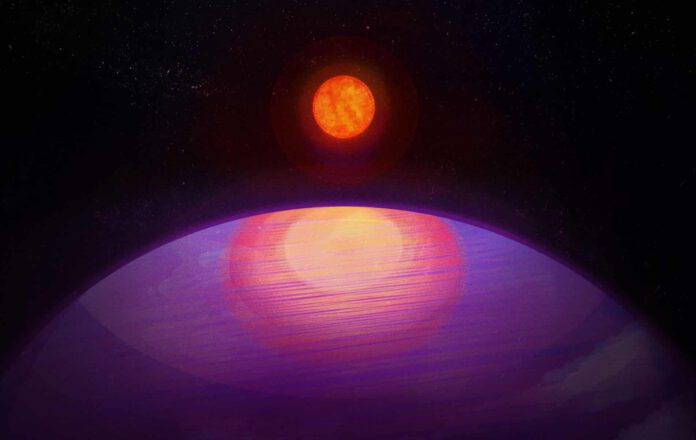
Existence of an Anomalous Planet Challenges Current Planetary Formation Models
Some astronomical discoveries pose serious questions to our understanding of the universe’s workings. This is certainly the case for one specific planet which, according to our current planetary formation models, should not be. However, against all odds, it does exist, and is orbiting around its sun, quite happily.
Scientists find this planet extraordinarily intriguing due to its unusual size as well as the characteristics of its sun. They discussed the discovery in an article published in the journal Science. The newfound planet, LHS 3154b, boasts a mass almost 13 times that of Earth and whirls surprisingly close to its parent star. Researcher Yamila Miguel, noted, “The distance between the planet (LHS 3154b) and the star (LHS 3154) is roughly equivalent to 0.022 times the distance between Earth and the sun.” This proximity allows the planet to complete a full orbit around its star in just a mere 3.7 days.
Differentiating Factors of LHS 3154b
While discovery of planets have become more frequent in recent years, the discovery of LHS 3154b stands out. This is primarily due to the planet’s mass and its star. In terms of mass, LHS 3154b is comparable to Neptune in our solar system. However, unlike Neptune, it does not revolve around a large sun-like star but around a smaller, cooler one. This anomaly puzzled researcher Suvrath Mahadevan who commented, “We would not expect such a heavy planet to be able to exist around a star with such low mass.”
Gas and Dust Disk
How can this be possible? “After a star is born, the material left over from star formation forms a gas and dust disk around the young star,” explains Miguel. From this disk, planets can be formed later. The heavier the star, the heavier the remaining material and thus the disk. To form a planet as heavy as Neptune, you would need a fairly heavy disk. Considering that disks around cool and small stars like LHS 3154 are believed to be quite small, it’s a challenge to gather the material needed for such a heavy planet. In fact, according to our models, it is virtually impossible, which makes this planet extremely interesting as it questions the classical theories of planet formation.
The Discovery
Given our current understanding of planet formation, LHS 3154b should not exist. But it does as confirmed by the measurements of the Habitable-zone Planet Finder.
Possible Explanations
This “impossible” planet forces researchers to reconsider the models explaining planet formation. In their research paper, they propose several explanations for the existence of this planet that contradicts current models. Miguel suggests, “It could be that the protoplanetary gas and dust disk from which the planet formed had a greater mass than classical theory predicts. Another possibility is that this disk harbored more dust, increasing the chance of forming planets with greater mass. Or the material was distributed over the disk in such a way that the dust accumulated mainly in the inner part of the disk, making it possible for this planet (which is very close to its parent star) to form. However, all these scenarios deviate from the classical image we have of the formation of large planets.”
The researchers need to revisit our understanding of how planets and stars form. Mahadevan said, “From the planet-forming disk around LHS 3154, a low-mass star, we expected that it would not harbor enough matter to make this planet. But the planet is there, forcing us to reevaluate our understanding of how planets and stars are born.” Miguel echoed these sentiments, noting, “This research tells us that there are more ways to form large planets than classical theory predicts.”











